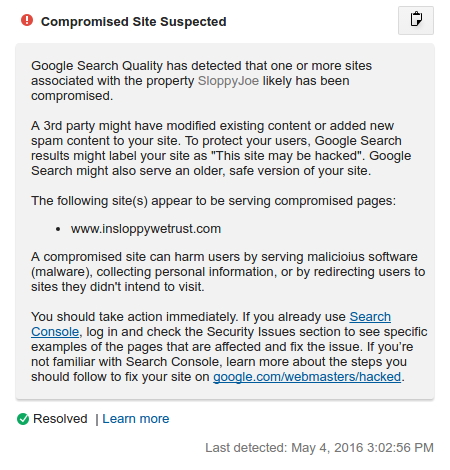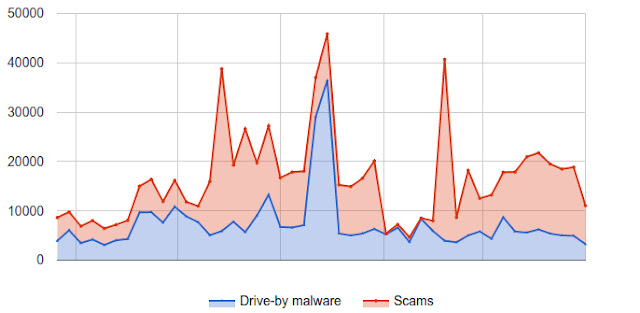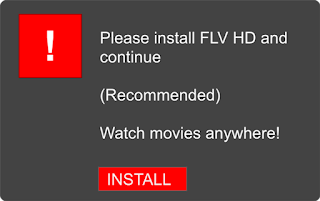Showcase your site’s reviews in Search
Today, we’re introducing Reviews from the web to local Knowledge Panels, to accompany our recently launched best-of lists and critic reviews features. Whether your site publishes editorial critic reviews, best-of places lists, or aggregates user ratings, this content can be featured in local Knowledge Panels when users are looking for places to go.
Reviews from the web
Available globally on mobile and desktop, Reviews from the web brings aggregated user ratings of up to three review sites to Knowledge Panels for local places across many verticals including shops, restaurants, parks and more.
By implementing review snippet markup and meeting our criteria, your site’s user-generated composite ratings will be eligible for inclusion. Add the Local Business markup to help Google match reviews to the right review subject and help grow your site’s coverage. For more information on the guidelines for the Reviews from the web, critic review and top places lists features, check out our developer site.
Critic reviews
In the U.S. on mobile and desktop, qualifying publishers can participate in the critic review feature in local Knowledge Panels. Critic reviews possess an editorial tone of voice and have an opinionated position on the local business, coming from an editor or on-the-ground expert. For more information on how to participate, see the details in our critic reviews page.
The local information across Google Search helps millions of people, every day, discover and share great places. If you have any questions, please visit our webmaster forums.
Posted by Ronnie Falcon, Product Manager
More Safe Browsing Help for Webmasters
(Crossposted from the Google Security Blog.)
For more than nine years, Safe Browsing has helped webmasters via Search Console with information about how to fix security issues with their sites. This includes relevant Help Center articles, example URLs to assist in diagnosing the presence of harmful content, and a process for webmasters to request reviews of their site after security issues are addressed. Over time, Safe Browsing has expanded its protection to cover additional threats to user safety such as Deceptive Sites and Unwanted Software.
To help webmasters be even more successful in resolving issues, we’re happy to announce that we’ve updated the information available in Search Console in the Security Issues report.
The updated information provides more specific explanations of six different security issues detected by Safe Browsing, including malware, deceptive pages, harmful downloads, and uncommon downloads. These explanations give webmasters more context and detail about what Safe Browsing found. We also offer tailored recommendations for each type of issue, including sample URLs that webmasters can check to identify the source of the issue, as well as specific remediation actions webmasters can take to resolve the issue.
We on the Safe Browsing team definitely recommend registering your site in Search Console even if it is not currently experiencing a security issue. We send notifications through Search Console so webmasters can address any issues that appear as quickly as possible.
Our goal is to help webmasters provide a safe and secure browsing experience for their users. We welcome any questions or feedback about the new features on the Google Webmaster Help Forum, where Top Contributors and Google employees are available to help.
For more information about Safe Browsing’s ongoing work to shine light on the state of web security and encourage safer web security practices, check out our summary of trends and findings on the Safe Browsing Transparency Report. If you’re interested in the tools Google provides for webmasters and developers dealing with hacked sites, this video provides a great overview.
Posted by Kelly Hope Harrington, Safe Browsing Team
Helping users easily access content on mobile
In Google Search, our goal is to help users quickly find the best answers to their questions, regardless of the device they’re using. Today, we’re announcing two upcoming changes to mobile search results that make finding content easier for users.
Simplifying mobile search results
Two years ago, we added a mobile-friendly label to help users find pages where the text and content was readable without zooming and the tap targets were appropriately spaced. Since then, we’ve seen the ecosystem evolve and we recently found that 85% of all pages in the mobile search results now meet this criteria and show the mobile-friendly label. To keep search results uncluttered, we’ll be removing the label, although the mobile-friendly criteria will continue to be a ranking signal. We’ll continue providing the mobile usability report in Search Console and the mobile-friendly test to help webmasters evaluate the effect of the mobile-friendly signal on their pages.
Helping users find the content they’re looking for
Although the majority of pages now have text and content on the page that is readable without zooming, we’ve recently seen many examples where these pages show intrusive interstitials to users. While the underlying content is present on the page and available to be indexed by Google, content may be visually obscured by an interstitial. This can frustrate users because they are unable to easily access the content that they were expecting when they tapped on the search result.
Pages that show intrusive interstitials provide a poorer experience to users than other pages where content is immediately accessible. This can be problematic on mobile devices where screens are often smaller. To improve the mobile search experience, after January 10, 2017, pages where content is not easily accessible to a user on the transition from the mobile search results may not rank as highly.
Here are some examples of techniques that make content less accessible to a user:
- Showing a popup that covers the main content, either immediately after the user navigates to a page from the search results, or while they are looking through the page.
- Displaying a standalone interstitial that the user has to dismiss before accessing the main content.
- Using a layout where the above-the-fold portion of the page appears similar to a standalone interstitial, but the original content has been inlined underneath the fold.
Examples of interstitials that make content less accessible
By contrast, here are some examples of techniques that, used responsibly, would not be affected by the new signal:
- Interstitials that appear to be in response to a legal obligation, such as for cookie usage or for age verification.
- Login dialogs on sites where content is not publicly indexable. For example, this would include private content such as email or unindexable content that is behind a paywall.
- Banners that use a reasonable amount of screen space and are easily dismissible. For example, the app install banners provided by Safari and Chrome are examples of banners that use a reasonable amount of screen space.
Examples of interstitials that would not be affected by the new signal, if used responsibly
We previously explored a signal that checked for interstitials that ask a user to install a mobile app. As we continued our development efforts, we saw the need to broaden our focus to interstitials more generally. Accordingly, to avoid duplication in our signals, we’ve removed the check for app-install interstitials from the mobile-friendly test and have incorporated it into this new signal in Search.
Remember, this new signal is just one of hundreds of signals that are used in ranking. The intent of the search query is still a very strong signal, so a page may still rank highly if it has great, relevant content. As always, if you have any questions or feedback, please visit our webmaster forums.
Posted by Doantam Phan, Product Manager
Promote your local businesses reviews with schema.org markup
Critic reviews are available across mobile, tablet and desktop, allowing publishers to increase the visibility of their reviews and expose their reviews to new audiences, whenever a local Knowledge Graph card is surfaced. English reviews for businesses in the US are already supported and we’ll very soon support many other languages and countries.
Publishers with critic reviews for local entities can get up and running by selecting snippets of reviews from their sites and annotating them and the associated business with schema.org markup. This process, detailed in our critic reviews markup instructions, allows publishers to communicate to Google which snippet they prefer, what URL is associated with the review and other metadata about the local business that allows us to ensure that we’re showing the right review for the right entity.
Google can understand a variety of markup formats, including the JSON-LD data format, which makes it easier than ever to incorporate structured data about reviews into webpages! Publishers can get started here. And as always, if you have any questions, please visit our webmaster forums.
Posted by Jaeho Kang, Software Engineer
AMP your content – A Preview of AMP’ed results in Search
It’s 2016 and it’s hard to believe that browsing the web on a mobile phone can still feel so slow with users abandoning sites that just don’t load quickly. To us — and many in the industry — it was clear that something needed to change. That was why we started working with the Accelerated Mobile Pages Project, an open source initiative to improve the mobile web experience for everyone.
Less than six months ago, we started sending people to AMP pages in the “Top stories” section of the Google Search Results page on mobile phones. Since then, we’ve seen incredible global adoption of AMP that has gone beyond the news industry to include e-commerce, entertainment, travel, recipe sites and so on. To date we have more than 150 million AMP docs in our index, with over 4 million new ones being added every week. As a result, today we’re sharing an early preview of our expanded AMP support across the entire search results page –not just the “Top stories” section.
To clarify, this is not a ranking change for sites. As a result of the growth of AMP beyond publishers, we wanted to make it easier for people to access this faster experience. The preview shows an experience where web results that that have AMP versions are labeled with  . When you tap on these results, you will be directed to the corresponding AMP page within the AMP viewer.
. When you tap on these results, you will be directed to the corresponding AMP page within the AMP viewer.
Try it out for yourself on your mobile device by navigating to g.co/ampdemo. Once you’re in the demo, search for something like “french toast recipe” or music lyrics by your favorite artist to experience how AMP can provide a speedier reading experience on the mobile web. The “Who” page on AMPProject.org has a flavor of some of the sites already creating AMP content.
We’re starting with a preview to get feedback from users, developers and sites so that we can create a better Search experience when we make this feature more broadly available later this year. In addition, we want to give everyone who might be interested in “AMPing up” their content enough time to learn how to implement AMP and to see how their content appears in the demo. And beyond developing AMP pages, we invite everyone to get involved and contribute to the AMP Project.
We can’t wait to hear from you as we work together to speed up the web. And as always, if you have any questions, please visit our webmaster forums.
Posted by Nick Zukoski, Software Engineer
More security notifications via Google Analytics
Today, we’re happy to announce that we’ll be expanding our set of alerts in Google Analytics by adding notifications about sites hacked for spam in violation of our Webmaster Guidelines. In the unlikely event of your site being compromised by a 3rd party, the alert will flag the affected domain right within the Google Analytics UI and will point you to resources to help you resolve the issue.
Website security is still something to take very seriously. In September of last year, we shared that we’d seen a 180% increase in sites getting hacked for spam compared to the previous year. Our research has shown that direct contact with website owners increases the likelihood of remediation to over 75%. This new alert gives us an additional method for letting website owners know that their site may be compromised.
What can you do to prevent your site being compromised?
Verify your site on Search Console.
Aside from receiving alerts in Google Analytics or via Search results labels when your site is compromised, we recommend taking the extra step to verify your site in Search Console.
The Security Issues feature will alert you when things don’t look good and will pin-point the issues we’ve uncovered on your properties. We have detailed a recovery journey in our hacked step-by-step recovery guide to help you resolve the issue and keep your website and users safe.
We’re always looking for ideas and feedback—feel free to use the comments section below. For any support questions, visit google.com/webmasters and our support communities available in 14 languages.
Posted by Giacomo Gnecchi Ruscone, Search Outreach and Anthony Medeiros, Google Analytics
Search at I/O 16 Recap: Eight things you don’t want to miss
Cross-posted from the Google Developers Blog
Two weeks ago, over 7,000 developers descended upon Mountain View for this year’s Google I/O, with a takeaway that it’s truly an exciting time for Search. People come to Google billions of times per day to fulfill their daily information needs. We’re focused on creating features and tools that we believe will help users and publishers make the most of Search in today’s world. As Google continues to evolve and expand to new interfaces, such as the Google assistant and Google Home, we want to make it easy for publishers to integrate and grow with Google.
In case you didn’t have a chance to attend all our sessions, we put together a recap of all the Search happenings at I/O.
1: Introducing rich cards
We announced rich cards, a new Search result format building on rich snippets, that uses schema.org markup to display content in an even more engaging and visual format. Rich cards are available in English for recipes and movies and we’re excited to roll out for more content categories soon. To learn more, browse the new gallery with screenshots and code samples of each markup type or watch our rich cards devByte.
2: New Search Console reports
We want to make it easy for webmasters and developers to track and measure their performance in search results. We launched a new report in Search Console to help developers confirm that their rich card markup is valid. In the report we highlight “enhanceable cards,” which are cards that can benefit from marking up more fields. The new Search Appearance filter also makes it easy for webmasters to filter their traffic by AMP and rich cards.
3: Real-time indexing
Users are searching for more than recipes and movies: they’re often coming to Search to find fresh information about what’s happening right now. This insight kickstarted our efforts to use real-time indexing to connect users searching for real-time events with fresh content. Instead of waiting for content to be crawled and indexed, publishers will be able to use the Google Indexing API to trigger the indexing of their content in real time. It’s still in its early days, but we’re excited to launch a pilot later this summer.
3: Getting up to speed with Accelerated Mobile Pages
We provided an update on our use of AMP, an open source effort to speed up the mobile web. Google Search uses AMP to enable instant-loading content. Speed is important—over 40% of users abandon a page that takes more than three seconds to load. We announced that we’re bringing AMPed news carousels to the iOS and Android Google apps, as well as experimenting with combining AMP and rich cards. Stay tuned for more via our blog and github page.
In addition to the sessions, attendees could talk directly with Googlers at the Search & AMP sandbox.
5: A new and improved Structured Data Testing Tool
We updated the popular Structured Data Testing tool. The tool is now tightly integrated with the DevSite Search Gallery and the new Search Preview service, which lets you preview how your rich cards will look on the search results page.
6: App Indexing got a new home (and new features)
We announced App Indexing’s migration to Firebase, Google’s unified developer platform. Watch the session to learn how to grow your app with Firebase App Indexing.
7: App streaming
App streaming is a new way for Android users to try out games without having to download and install the app — and it’s already available in Google Search. Check out the session to learn more.
8. Revamped documentation
We also revamped our developer documentation, organizing our docs around topical guides to make it easier to follow.
Thanks to all who came to I/O — it’s always great to talk directly with developers and hear about experiences first-hand. And whether you came in person or tuned in from afar, let’s continue the conversation on the webmaster forum or during our office hours, hosted weekly via hangouts-on-air.
Posted by Posted by Fabian Schlup, Software Engineer
Tie your sites together with property sets in Search Console
Mobile app, mobile website, desktop website — how do you track their combined visibility in search? Until now, you’ve had to track all of these statistics separately. Search Console is introducing the concept of “property sets,” which let you combine …
Introducing rich cards
Evolution of search results for queries like [peanut butter cookies recipe]: with rich cards, results are presented in carousels that are easy to browse by scrolling left and right. Carousels can contain cards all from the same site or from multiple sites.
We’re starting to show rich cards for two content categories: recipes and movies. They will appear initially on mobile search results in English for google.com. We’re actively experimenting with more opportunities to provide more publishers with a rich preview of their content.
We’ve built a comprehensive set of tools and completely updated our developer documentation to take site owners and developers from initial exploration through implementation to performance monitoring.
Browse the new gallery with screenshots and code samples of each markup type.
We strongly recommend using JSON-LD in your implementation.
- Find out which fields are essential to mark up in order for a rich card to appear. We’ve also listed additional fields that can enhance your rich cards.
- See a preview in revamped Structured Data Testing Tool of how the rich card might appear in Search (currently available for recipes and movies).
- Use the the Structured Data Testing Tool to see errors as you tweak your markup in real time.
Check how many of your rich cards are indexed in the new Search Console Rich Cards report.
- Keep an eye out for errors (also listed in the Rich Cards report). Each error example links directly to the Structured Data Testing tool so you can test it.
- Submit a sitemap to help us discover all your marked-up content.
In the Rich Cards report, you’ll see which cards can be enhanced by marking up additional fields.
A new “Rich results” filter in Search Analytics (currently in a closed beta) will help you track how your rich cards and rich snippets are doing in search: you’ll be able to drill down and see clicks and impressions for both.
A: Yes, you can! We’ll keep you posted as the rich result ecosystem evolves.
A: The Structured Data report will continue to show only top-level entities for the existing rich snippets (Product, Recipe, Review, Event, SoftwareApplication, Video, News article) and for any new categories (e.g., Movies). We plan to migrate all errors from the structured data report into rich card report.
A: Technical and quality guidelines apply for rich cards as they do for rich snippets. We will enforce them as before.
Learn more about rich cards in the Search and the mobile content ecosystem session at Google I/O (which will be live streamed!) or on the Developer site. If you have more questions, find us in the dedicated Structured data section of our forum, on Twitter or on Google+.
Posted by Na’ama Zohary, Search Console Team, and Elliott Ng, Product Management Director, Search Ecosystem
A new mobile friendly testing tool
Mobile is close to our heart – we love seeing more and more sites make their content available in useful & accessible ways for mobile users. To help keep the ball rolling, we’ve now launched a new Mobile Friendly Test. The new tool is linked from …
Deeper Integration of Search Console in Google Analytics
(Cross-posted from the Google Analytics Blog.)
Google Analytics helps brands optimize their websites and marketing efforts for all sources of traffic, and Search Console is where website owners manage how they appear in Google organic search results. Today, we are introducing the ability to display Search Console metrics alongside Google Analytics metrics, in the same reports, side by side – giving you a full view of how your site shows up and performs in organic search results.
For years, users of both Search Console and Google Analytics have been able to link the two properties (instructions) and see Search Console statistics in Google Analytics, in isolation. But to gain a fuller picture of your website’s performance in organic search, it’s beneficial to see how visitors reached your site and what they did once they got there.
With this update, you’ll be able to see your Search Console metrics and your Google Analytics metrics in the same reports, in parallel. By combining data from both sources at the landing page level, we’re able to show you a full range of Acquisition, Behavior and Conversion metrics for your organic search traffic. This feature out is rolling out over the coming few weeks, so not everyone will see it immediately.
 New Search Console reports combine Search Console and Google Analytics metrics
New Insights
The new reports allow you to examine your organic search data end-to-end and discover unique and actionable insights. Your Acquisition metrics from Search Console, such as impressions and average position, are now available in relation to your Behavior and Conversion metrics from Google Analytics, like bounce rate and pages per session.
Below are some new capabilities resulting from this improved integration:
• Find landing pages that are attracting many users through Google organic search (e.g., high impressions and high click through rate) but where users are not engaging with the website. In this case, you should consider improving your landing pages.
• Find landing pages that have high site engagement but are not successfully attracting users from Google organic search (e.g., have low click through rate). In this case, you might benefit from improving titles and descriptions shown in search.
• Learn which queries are ranking well for each organic landing page.
• Segment organic performance by device category (desktop, tablet, mobile) in the new Devices report.

New Landing Page report showing Search Console and Google Analytics metrics
Additional Information
Each of these new reports will display how your organic search traffic performs. As data is joined at the landing page level, Landing Pages, Countries and Devices will show both Search Console and Google Analytics data, while the Queries report will only show Search Console data for individual queries. The same search queries will display in Google Analytics as you see in Search Console today.
As mentioned in our Search Console Help Center, some data may not be displayed, to protect user privacy. For example, Search Console may not track some infrequent queries, and will not display those that include personal or sensitive information.
Also, while the data is displayed in parallel, not all Google Analytics features are available for Search Console data – including segmentation. Any segment that is applied to the new combined reports will only apply to Google Analytics data. You may also see that clicks from Search Console may differ from total sessions in Google Analytics.
To experience the new combined reports from Search Console and Google Analytics, make sure your properties are linked, and then navigate to the new section “Search Console”, which should appear under “Acquisition” in the left-hand navigation in Google Analytics.
Posted by Joan Arensman, Product Manager, and Daniel Waisberg, Analytics Advocate
How we fought webspam in 2015
Below are some of the webspam insights we gathered in 2015, including trends we’ve seen, what we’re doing to fight spam and protect against those trends, and how we’re working with you to make the web better.
2015 webspam trends
- We saw a huge number of websites being hacked – a 180% increase compared to the previous year. Stay safe on the web and take preventative measures to protect your content on the web.
- We saw an increase in the number of sites with thin, low quality content. Such content contains little or no added value and is often scraped from other sites.
2015 spam-fighting efforts
- As always, our algorithms addressed the vast majority of webspam and search quality improvement for users. One of our algorithmic updates helped to remove the amount of hacked spam in search results.
- The rest of spam was tackled manually. We sent more than 4.3 million messages to webmasters to notify them of manual actions we took on their site and to help them identify the issues.
- We saw a 33% increase in the number of sites that went through spam clean-up efforts towards a successful reconsideration process.
Working with users and webmasters for a better web
- More than 400,000 spam reports were submitted by users around the world. After prioritizing the reports, we acted on 65% of them, and considered 80% of those acted upon to be spam. Thanks to all who submitted reports and contributed towards a cleaner web ecosystem!
- We conducted more than 200 online office hours and live events around the world in 17 languages. These are great opportunities for us to help webmasters with their sites and for them to share helpful feedback with us as well.
- The webmaster help forum continued to be an excellent source of webmaster support. Webmasters had tens of thousands of questions answered, including over 35,000 by users designated as Webmaster Top Contributors. Also, 56 Webmaster Top Contributors joined us at our Top Contributor Summit to discuss how to provide users and webmasters with better support and tools. We’re grateful for our awesome Top Contributors and their tremendous contributions!
We’re continuously improving our spam-fighting technology and working closely with webmasters and users to foster and support a high-quality web ecosystem. (In fact, fighting webspam is one of the many ways we maintain search quality at Google.) Thanks for helping to keep spammers away so users can continue accessing great content in Google Search.
Posted by Kiyotaka Tanaka and Mary Chen, User Education and Search Outreach
Helping webmasters re-secure their sites
(Cross-posted from the Google Security Blog.)
Every week, over 10 million users encounter harmful websites that deliver malware and scams. Many of these sites are compromised personal blogs or small business pages that have fallen victim due to a weak password or outdated software. Safe Browsing and Google Search protect visitors from dangerous content by displaying browser warnings and labeling search results with ‘this site may harm your computer’. While this helps keep users safe in the moment, the compromised site remains a problem that needs to be fixed.
Unfortunately, many webmasters for compromised sites are unaware anything is amiss. Worse yet, even when they learn of an incident, they may lack the security expertise to take action and address the root cause of compromise. Quoting one webmaster from a survey we conducted, “our daily and weekly backups were both infected” and even after seeking the help of a specialist, after “lots of wasted hours/days” the webmaster abandoned all attempts to restore the site and instead refocused his efforts on “rebuilding the site from scratch”.
In order to find the best way to help webmasters clean-up from compromise, we recently teamed up with the University of California, Berkeley to explore how to quickly contact webmasters and expedite recovery while minimizing the distress involved. We’ve summarized our key lessons below. The full study, which you can read here, was recently presented at the International World Wide Web Conference.
When Google works directly with webmasters during critical moments like security breaches, we can help 75% of webmasters re-secure their content. The whole process takes a median of 3 days. This is a better experience for webmasters and their audience.
How many sites get compromised?
Over the last year Google detected nearly 800,000 compromised websites—roughly 16,500 new sites every week from around the globe. Visitors to these sites are exposed to low-quality scam content and malware via drive-by downloads. While browser and search warnings help protect visitors from harm, these warnings can at times feel punitive to webmasters who learn only after-the-fact that their site was compromised. To balance the safety of our users with the experience of webmasters, we set out to find the best approach to help webmasters recover from security breaches and ultimately reconnect websites with their audience.
Finding the most effective ways to aid webmaster
- Getting in touch with webmasters: One of the hardest steps on the road to recovery is first getting in contact with webmasters. We tried three notification channels: email, browser warnings, and search warnings. For webmasters who proactively registered their site with Search Console, we found that email communication led to 75% of webmasters re-securing their pages. When we didn’t know a webmaster’s email address, browser warnings and search warnings helped 54% and 43% of sites clean up respectively.
- Providing tips on cleaning up harmful content: Attackers rely on hidden files, easy-to-miss redirects, and remote inclusions to serve scams and malware. This makes clean-up increasingly tricky. When we emailed webmasters, we included tips and samples of exactly which pages contained harmful content. This, combined with expedited notification, helped webmasters clean up 62% faster compared to no tips—usually within 3 days.
- Making sure sites stay clean: Once a site is no longer serving harmful content, it’s important to make sure attackers don’t reassert control. We monitored recently cleaned websites and found 12% were compromised again in 30 days. This illustrates the challenge involved in identifying the root cause of a breach versus dealing with the side-effects.
Posted by Kurt Thomas and Yuan Niu, Spam & Abuse Research
No More Deceptive Download Buttons
(Cross-posted from the Google Security Blog.)
In November, we announced that Safe Browsing would protect you from social engineering attacks – deceptive tactics that try to trick you into doing something dangerous, like installing unwanted software or revealing your personal information (for example, passwords, phone numbers, or credit cards). You may have encountered social engineering in a deceptive download button, or an image ad that falsely claims your system is out of date. Today, we’re expanding Safe Browsing protection to protect you from such deceptive embedded content, like social engineering ads.
Consistent with the social engineering policy we announced in November, embedded content (like ads) on a web page will be considered social engineering when they either:
- Pretend to act, or look and feel, like a trusted entity — like your own device or browser, or the website itself.
- Try to trick you into doing something you’d only do for a trusted entity — like sharing a password or calling tech support.
Posted by Lucas Ballard, Safe Browsing Team
Continuing to make the web more mobile friendly
If you’ve already made your site mobile-friendly, you will not be impacted by this update. If you need support with your mobile-friendly site, we recommend checking out the Mobile-Friendly Test and the Webmaster Mobile Guide, both of which provide guidance on how to improve your mobile site. And remember, the intent of the search query is still a very strong signal — so even if a page with high quality content is not mobile-friendly, it could still rank well if it has great, relevant content.
If you have any questions, please go to the Webmaster help forum.
Posted by Klemen Kloboves, Software Engineer
Updating the smartphone user-agent of Googlebot
| Mozilla/5.0 (Linux; Android 6.0.1; Nexus 5X Build/MMB29P) AppleWebKit/537.36 (KHTML, like Gecko) Chrome/41.0.2272.96 Mobile Safari/537.36 (compatible; Googlebot/2.1; +http://www.google.com/bot.html) (Googlebot smartphone user-agent starting from April 18, 2016) |
Today, we use the following smartphone user-agent for Googlebot:
| Mozilla/5.0 (iPhone; CPU iPhone OS 8_3 like Mac OS X) AppleWebKit/600.1.4 (KHTML, like Gecko) Version/8.0 Mobile/12F70 Safari/600.1.4 (compatible; Googlebot/2.1; +http://www.google.com/bot.html) (Current Googlebot smartphone user-agent) |
We’re updating the user-agent string so that our renderer can better understand pages that use newer web technologies. Our renderer evolves over time and the user-agent string indicates that that it is becoming more similar to Chrome than Safari. To make sure your site can be viewed properly by a wide range of users and browsers, we recommend using feature detection and progressive enhancement.
Our evaluation suggests that this user-agent change should have no effect on 99% of sites. The most common reason a site might be affected is if it specifically looks for a particular Googlebot user-agent string. User-agent sniffing for Googlebot is not recommended and is considered to be a form of cloaking. Googlebot should be treated like any other browser.
If you believe your site may be affected by this update, we recommend checking your site with the Fetch and Render Tool in Search Console (which has been updated with the new user-agent string) or by changing the user-agent string in Developer Tools in your browser (for example, via Chrome Device Mode). If you have any questions, we’re always happy to answer them in our Webmaster help forums.
Posted by Katsuaki Ikegami, Software Engineer
Best practices for bloggers reviewing free products they receive from companies
As a form of online marketing, some companies today will send bloggers free products to review or give away in return for a mention in a blogpost. Whether you’re the company supplying the product or the blogger writing the post, below are a few best practices to ensure that this content is both useful to users and compliant with Google Webmaster Guidelines.
- Use the nofollow tag where appropriate
Links that pass PageRank in exchange for goods or services are against Google guidelines on link schemes. Companies sometimes urge bloggers to link back to:
- the company’s site
- the company’s social media accounts
- an online merchant’s page that sells the product
- a review service’s page featuring reviews of the product
- the company’s mobile app on an app store
Bloggers should use the nofollow tag on all such links because these links didn’t come about organically (i.e., the links wouldn’t exist if the company hadn’t offered to provide a free good or service in exchange for a link). Companies, or the marketing firms they’re working with, can do their part by reminding bloggers to use nofollow on these links.
- Disclose the relationship
Users want to know when they’re viewing sponsored content. Also, there are laws in some countries that make disclosure of sponsorship mandatory. A disclosure can appear anywhere in the post; however, the most useful placement is at the top in case users don’t read the entire post.
- Create compelling, unique content
The most successful blogs offer their visitors a compelling reason to come back. If you’re a blogger you might try to become the go-to source of information in your topic area, cover a useful niche that few others are looking at, or provide exclusive content that only you can create due to your unique expertise or resources.
For more information, please drop by our Google Webmaster Central Help Forum.
Posted by the Google Webspam Team
An update on the Webmaster Central Blog
Thanks as always for reading—we’ll see you here again soon at webmasters.googleblog.com!
Posted by John Mueller, Webmaster Trends Analyst, Zürich
AMP NewsLab Office Hours in your language
Accelerated Mobile Pages (AMP) is a global, industry-wide initiative, with publishers large and small all focused on the same goal: a better, faster mobile web.
We’ve had a great response to our English language AMP office hours, but we know that English isn’t everyone’s native language.
For the next two weeks, we’re rolling out a new series of office hours in French, Italian, German, Spanish, Brazilian Portuguese, Russian, Japanese, and Indonesian and invite everyone to learn about AMP in their native language. Product Managers, Technical Managers, & Engineers at Google, will get to speak in their native tongue, and answer any questions you may have on AMP.
First we will reintroduce you to AMP and how it works, before diving into the technical specs and various components of AMP. You can add your questions via the Q and A app on the event pages below, and we will answer them during the office hours. You can also watch them on the News Lab YouTube page after the event.
Check out the lineup below and join the discussion.
- French
- Introduction to AMP – Mar. 7 @ 1700 CET with Cecile Pruvost, Industry Manager
- AMP Anatomy – Mar. 14 @ 1700 CET with Emeric Studer, Technology Manager
- Italian
- Introduction to AMP – Mar. 8 @ 1500 CET with Luca Forlin Head of International Play Newsstand Partnerships
- AMP Anatomy – Mar. 15 @ 1500 CET with Flavio Palandri Antonelli, AMP Software Engineer
- German
- Introduction to AMP – Mar. 9 @ 1700 CET with Nadine Gerspacher, Partner Development Manager
- AMP Anatomy – Mar. 18 @ 1600 CET with Paul Bakaus, Developer Advocate
- Spanish
- Introduction to AMP – Mar. 9 @ 1430 CET with Demian Renzulli, Technical Solutions Consultant
- AMP Anatomy – Mar. 16 @ 1430 CET with Julian Toledo, Developer Advocate
- Brazilian Portuguese
- Introduction to AMP – Mar. 10 @ 1430 BRT with Carol Soler, Strategic Partner Manager
- AMP Anatomy – Mar. 17 @ 1430 BRT with Breno Araújo, Technology Manager
- Russian
- Introduction to AMP & AMP Anatomy – Mar. 10 @ 1500 MSK with Natasha Rostovtceva, Strategic Partner Manager & Boris Farber, Developer Advocate
- Japanese
- Introduction to AMP – Mar. 15 @ 1800 JST with Duncan Wright, Strategic Partner Manager
- Indonesian
- Introduction to AMP – Mar. 10 @ 1400 WIB with Rica Handayani, Strategic Partner Manager
Posted by Tomo Taylor, AMP Community Manager
AMP error report preview in Search Console
More and more sites are implementing Accelerated Mobile Pages (AMP) for news content, so we’ve decided to provide a preview of error reports in Search Console to help you get ready for the upcoming official AMP launch and get early feedback from you. Y…





























